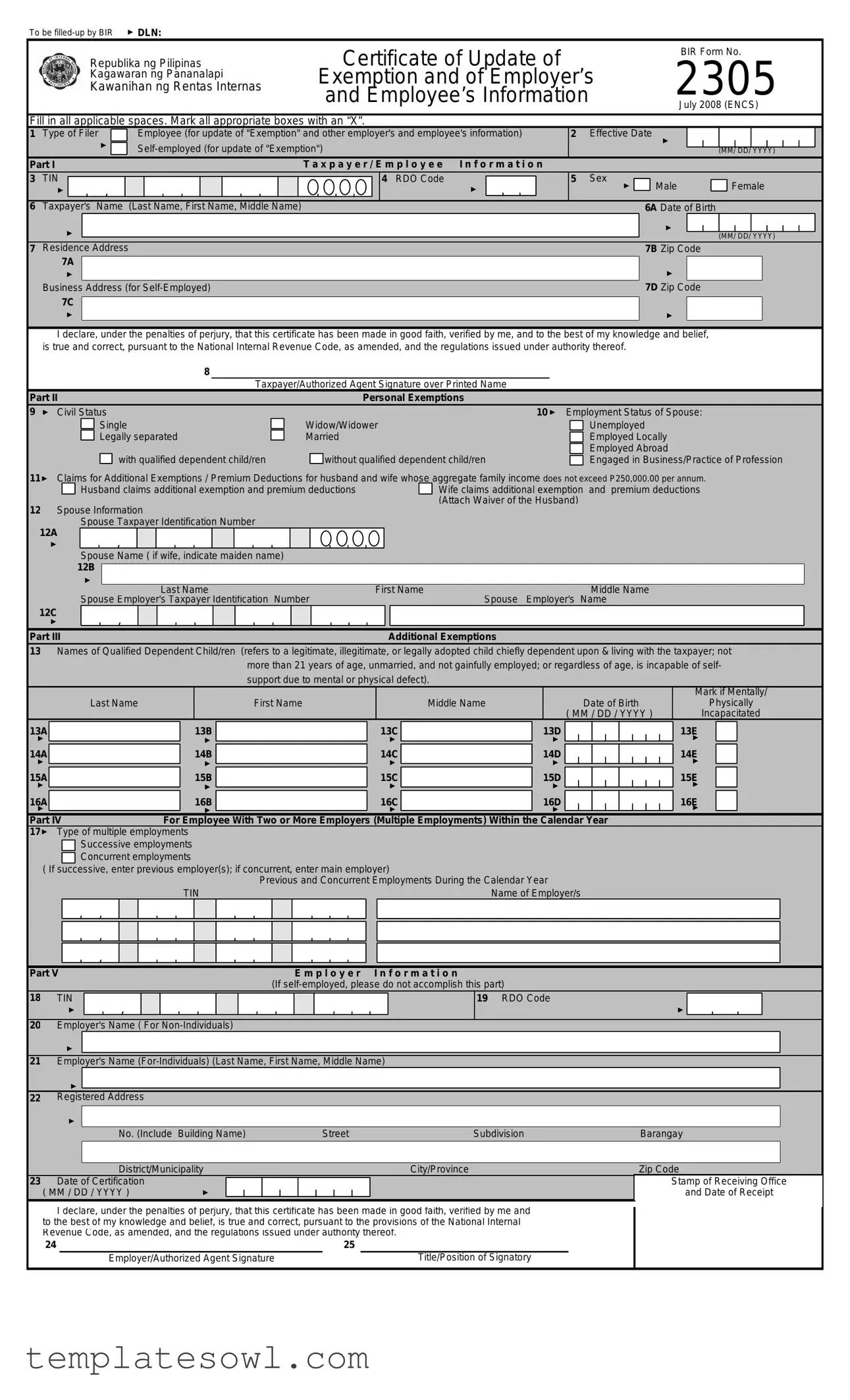Filling out the BIR Form 2305 can be a straightforward process, but several common mistakes can lead to complications. One frequent error is not filling in all applicable spaces. Every section requires specific information, and leaving even one area blank can result in delays or required corrections. Review the form to ensure every relevant field is completed before submission.
Another mistake is failing to mark appropriate boxes with an "X." Each box is critical for clarifying your status, such as type of filer or civil status. If a box is not marked, it could cause confusion or misinterpretation by the processing staff.
People often miswrite their Taxpayer Identification Number (TIN) or Residential Registration District Office (RDO) code. Double-check these entries to avoid miscommunication. Incorrect numbers can significantly hinder your filing process.
Providing inaccurate personal information, such as names or dates of birth, is another common error. It’s essential to ensure that names match exactly with official documents and that dates follow the correct format. Mistakes in this section can lead to complications with verification and processing.
Individuals frequently underestimate the importance of attached documentation. If you claim additional exemptions or premium deductions, ensure that you attach the necessary forms, such as the Waiver of the Husband. Failure to include required documentation can result in delays in processing your claims.
Not indicating your spouse's employment status correctly can also create confusion. Misrepresentation of whether your spouse is employed abroad, locally, or not at all can impact claims for exemption and deductions.
Another pitfall is neglecting to list all qualified dependent children. The form requires details about each child, including their full names and dates of birth. People sometimes forget to include a dependent or fail to list them properly, which may affect eligibility for additional exemptions.
For those with multiple employers, accurately reporting previous and concurrent employment is vital. Omitting necessary information about previous employers can result in discrepancies in tax calculation or potential penalties.
Lastly, signing the form is crucial. Individuals may forget to provide their signature, which is a mandatory requirement for validation. A missing signature can halt the entire processing of your form and lead to further delays.
